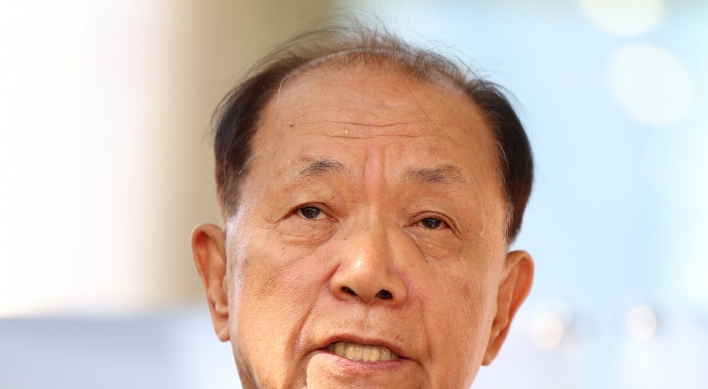U.S. Secretary of Defense Ashton Carter arrived here Thursday to meet with his South Korean counterpart on ways to improve joint capabilities against North Korea on his first trip to Northeast Asia since taking office last month.
Drawing key attention is whether Carter will bring up the possible U.S. deployment of the Terminal High Altitude Area Defense
(THAAD) system on the peninsula, though Seoul and Washington officials have said they would not touch upon the sensitive issue at this time.
Washington has expressed its willingness to deploy the battery here to better protect South Korea and some 28,000 U.S. troops from the North's threats.
It is the most controversial security issue at home and abroad amid concerns and opposition from neighboring countries, mainly China and Russia.
As an integral part of the U.S.-led missile defense system, THAAD is designed to shoot down short, medium and intermediate ballistic missiles at a higher altitude in their terminal phase using a hit-to-kill method.
Shortly after arriving here for a three-day stay following a visit to Japan, Carter had a meeting with U.S. troops stationed here at Osan Air Base in Pyeongtaek, some 70 kilometers south of Seoul, and looked around major facilities there including the Korea Air and Space Operations Center.
During the meeting with his soldiers, Carter thanked them for their dedication and asked for their best service, stressing that the Korean Peninsula is "one of the most dangerous places (in the world) and readiness is at a high premium here on the peninsula."
He also reiterated the strong U.S. commitment to rebalance to the region.
"A lot of our newer capabilities that we are investing in are going to be flowing into this theater because of the importance we attach to it ... because this is very demanding theater," Carter said, citing such equipment as "new stealth fighters, new stealthy bombers and several new ship classes."
"You will see a lot of new stuff showing up here first, and that is deliberate and that is appropriate," he noted.
On Friday, Carter is scheduled to pay a courtesy call on South Korean President Park Geun-hye before having talks with Defense
Han and Carter will then hold a joint press conference and visit the Navy's 2nd Fleet Command together to pay tribute to the sailors who died in the sinking of the warship Cheonan.
On March 26, 2010, the 1,200-ton naval corvette sank in the Yellow Sea, killing 46 sailors. A South Korean-led international investigation found that the North had torpedoed the ship, though Pyongyang denied its involvement. The hull of the vessel is on display in the Command headquarters in Pyeongtaek.
Carter will be the first U.S. defense minister to visit the site to commemorate the deceased, which "will be a chance to display the allies' staunch will to jointly cope with any threat
The U.S. secretary will leave here on Saturday for the country's Pacific Command in Hawaii on his way back home.
Two days before Carter's visit to South Korea, the communist North test-fired two short-range ground-to-air KN-06 missiles from its western province of South Pyongan into the East Sea, Seoul's defense ministry spokesman Kim Min-seok said in a regular briefing
The projectiles flew some 100 kilometers after being launched from a transporter erector launcher (TEL), he said, adding Seoul and Washington are closely monitoring moves of the bellicose regime. (Yonhap)







![[KH Explains] No more 'Michael' at Kakao Games](http://res.heraldm.com/phpwas/restmb_idxmake.php?idx=644&simg=/content/image/2024/04/28/20240428050183_0.jpg&u=20240428180321)










![[Herald Interview] Mistakes turn into blessings in street performance, director says](http://res.heraldm.com/phpwas/restmb_idxmake.php?idx=652&simg=/content/image/2024/04/28/20240428050150_0.jpg&u=20240428174656)
